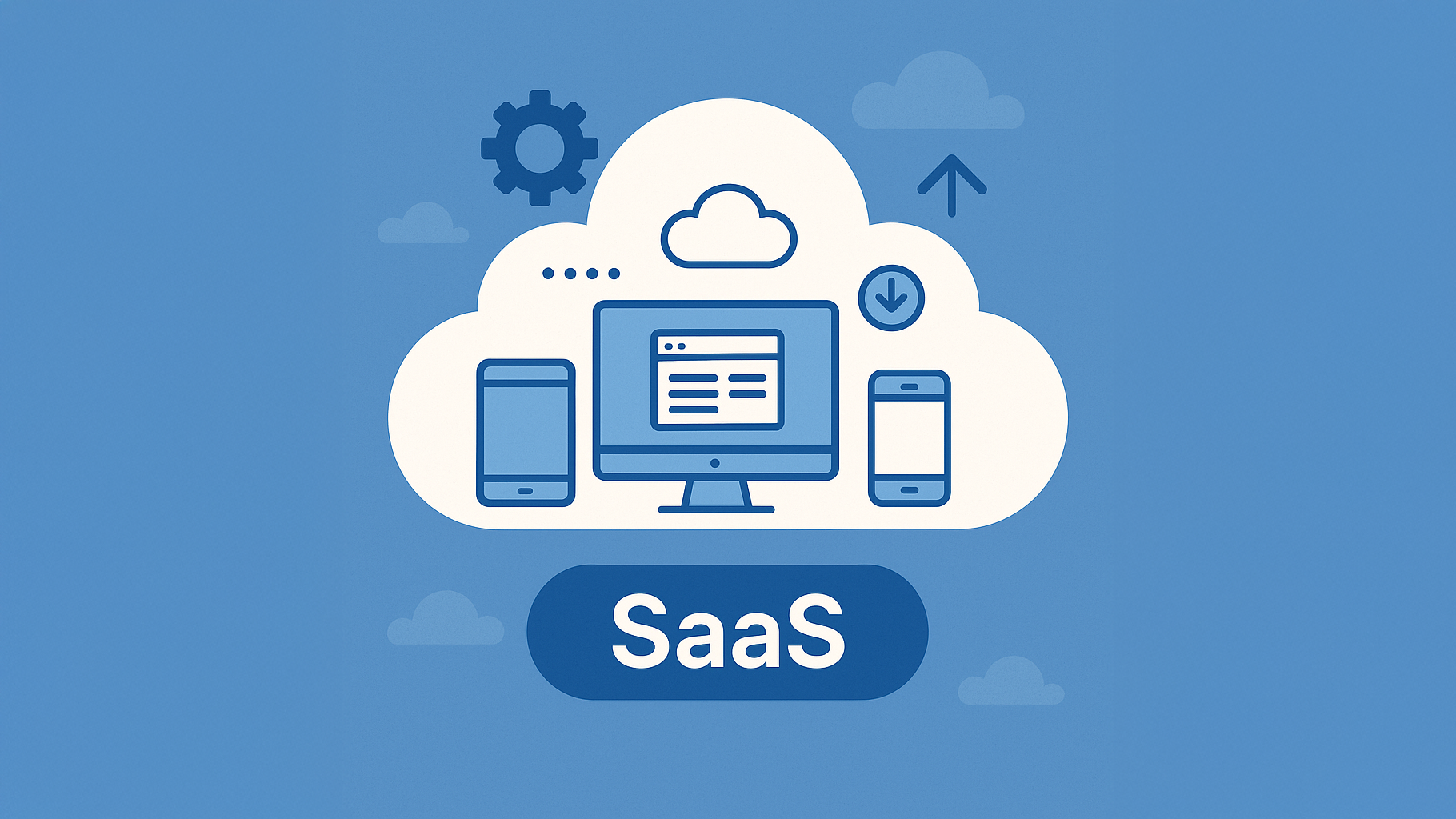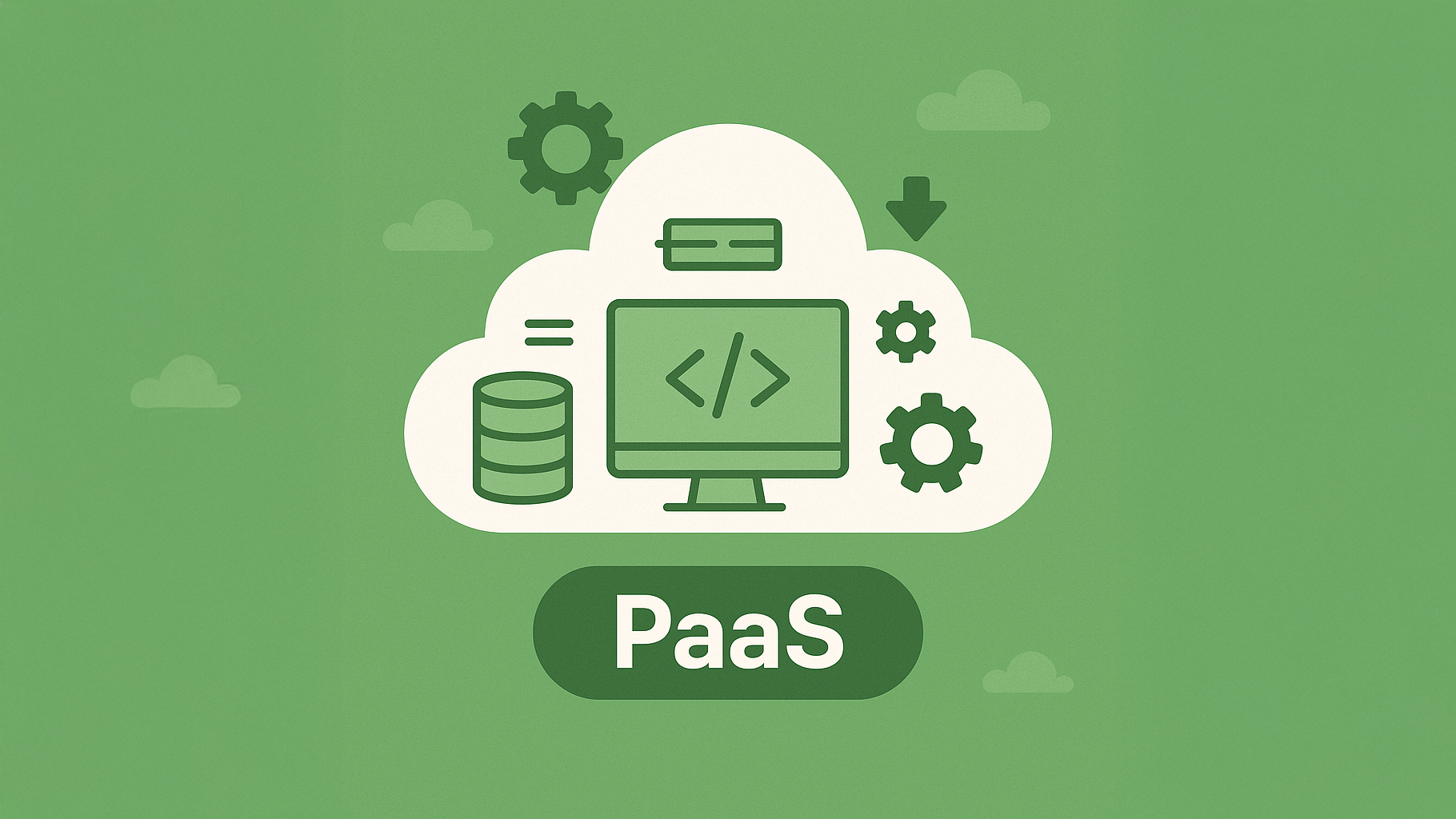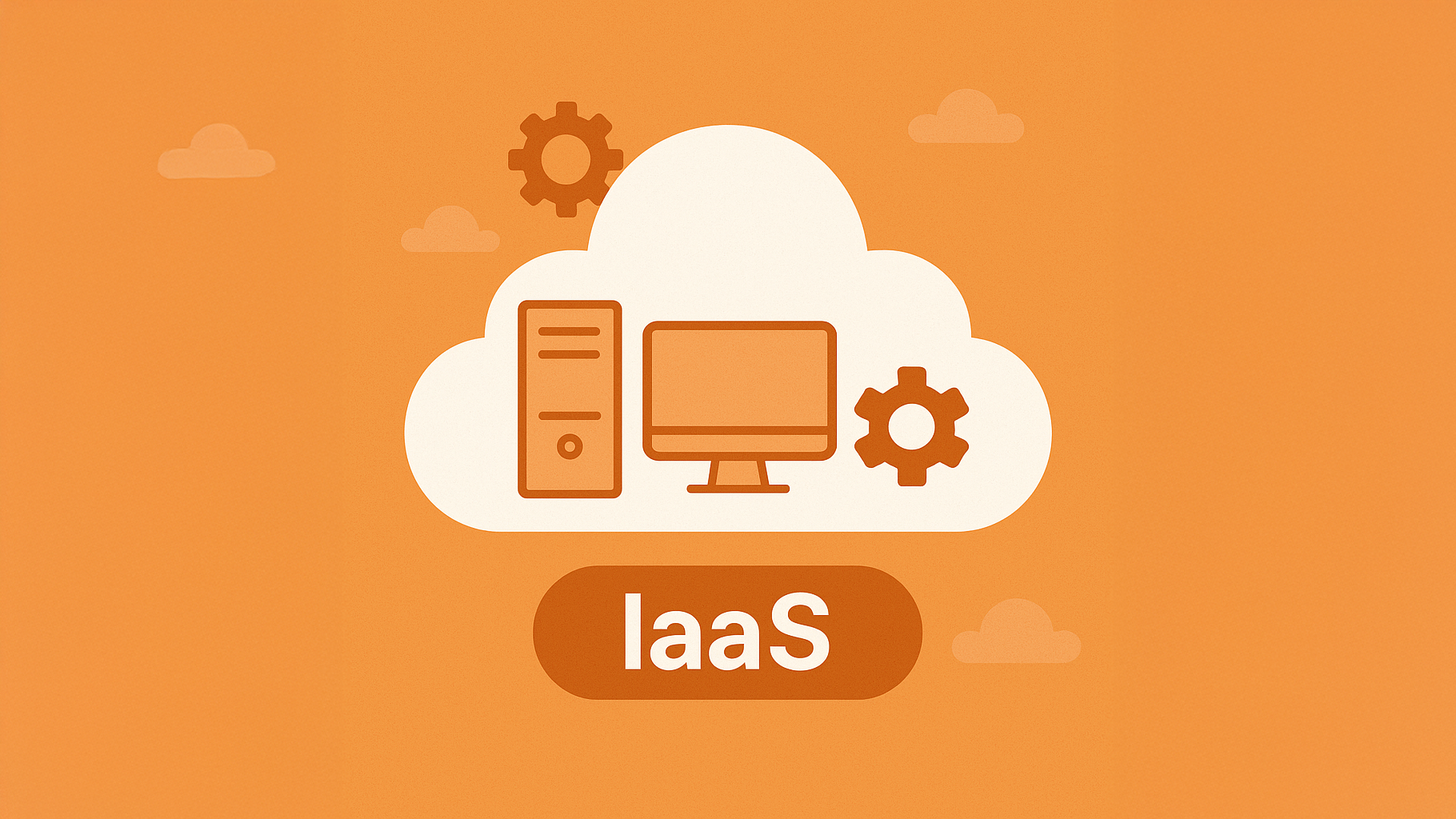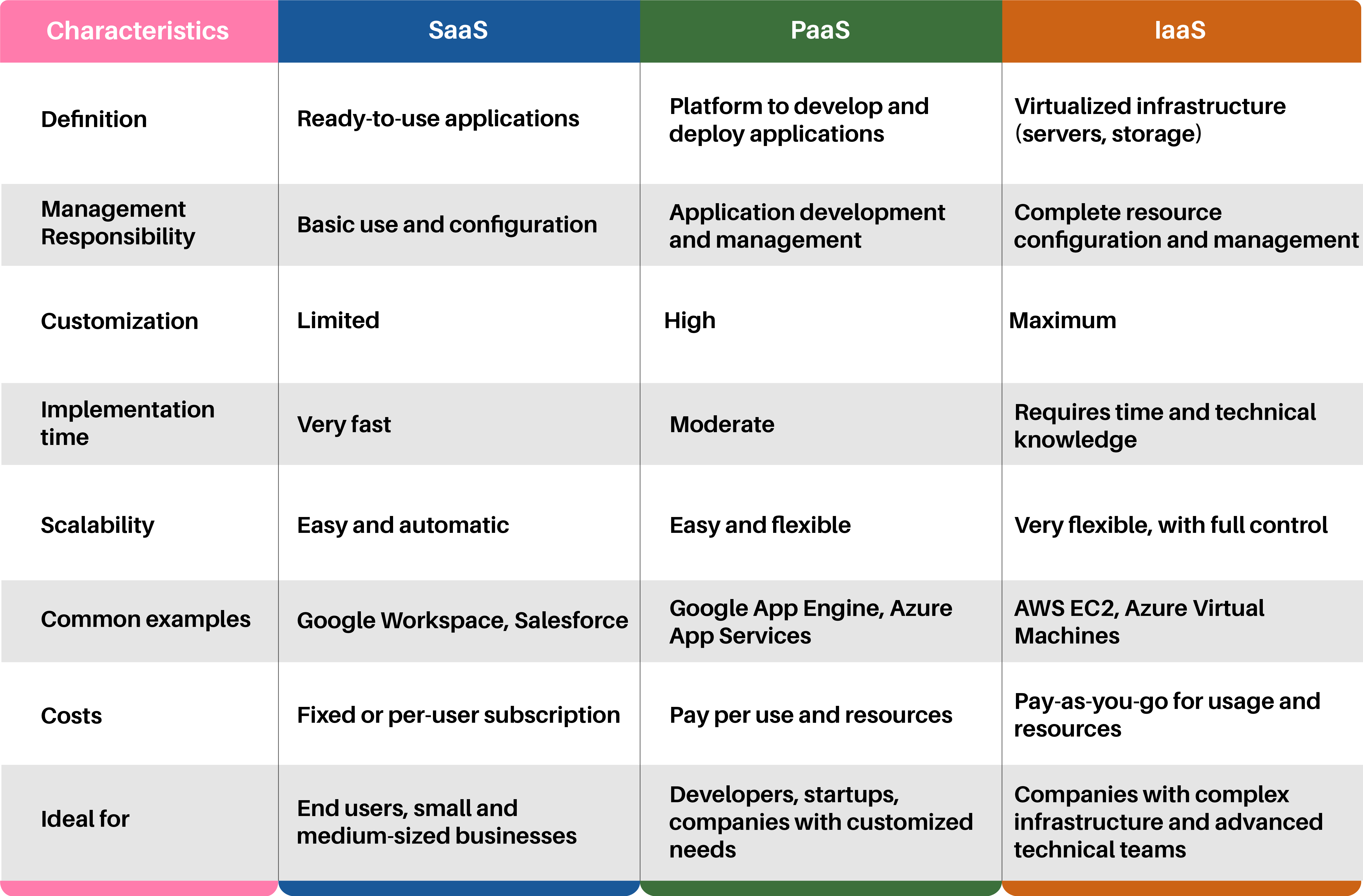SaaS, PaaS and IaaS: Key Differences and How to Choose the Best Option for Your Business
SaaS, PaaS or IaaS? In an increasingly digital business environment, understanding the differences between these cloud service models is key to choosing the option that best suits your company. Discover their features, benefits and how to use them strategically to drive innovation and efficiency.

In the digital age, the adoption of cloud technologies has become a determining factor for the success and competitiveness of companies. Organizations, regardless of their size, are looking for solutions that allow them to be more agile, efficient and scalable, and this is where cloud services come into play: SaaS, PaaS and IaaS. Knowing the characteristics and differences of these models not only helps you make informed decisions, but it also allows you to optimize resources and accelerate innovation.

What is SaaS?
Software as a Service (SaaS) is probably the most accessible and widely used model by companies in all sectors. In essence, SaaS offers ready-to-use applications that run in the cloud and that are accessed via the Internet. This means there's no need to install software locally or manage updates, as everything is managed by the vendor. This ease of use and low initial cost make SaaS an ideal option for companies that want to implement fast and effective solutions without large investments in infrastructure.
SaaS applications range from productivity tools, such as Microsoft 365 or Google Workspace, to more specialized systems such as Salesforce in CRM or HubSpot for marketing. By centralizing administration and maintenance on the vendor, companies can focus on using software to improve their processes without technical distractions. However, this convenience has a counterpart: customization possibilities are limited, and companies must adapt to the standard operation offered by the software. This can be an inconvenience for organizations with very particular processes or very specific needs.
In addition, the SaaS model works on a subscription basis, allowing costs to be predictable and scalable. However, it also requires a stable internet connection to ensure continuous access, something that must be considered in areas or situations where connectivity may be a challenge.

What is PaaS?
Platform as a Service (PaaS) goes one step further by offering a complete environment so that developers can create, test and deploy applications without worrying about the underlying infrastructure. Here, the service provider is responsible for managing the servers, storage and networks, while the customer focuses on building and customizing the applications that their business requires.
This model is ideal for companies that want to develop custom software or implement innovative solutions, as it offers a set of tools and services that accelerate the development process. For example, platforms such as Google App Engine or Microsoft Azure App Services allow the integration of databases, authentication systems, analysis and more, in a controlled and optimized environment.
By not having to manage hardware or operating systems, development teams can be more productive and focus on adding value, significantly reducing time to market. However, this flexibility comes with certain limitations, as the vendor may impose restrictions on supported programming languages or platform-specific features, requiring careful evaluation to ensure that it meets the needs of the project.

What is IaaS?
Infrastructure as a Service (IaaS) is the model that offers maximum control and customization over technological resources. In this case, the provider delivers virtualized resources—servers, storage, networks—that the customer configures and manages according to their requirements. This level of autonomy is especially valuable for companies with complex infrastructures, specific security needs, or that want to migrate traditional workloads to the cloud while maintaining total control.
With IaaS, the responsibility for maintaining, updating, and securing the software lies primarily with the company that uses it. This involves having a technical team trained to handle configurations, monitoring and troubleshooting. However, the ability to scale resources on demand and pay only for what is consumed is a significant advantage over maintaining a physical data center.
Leading IaaS platforms, such as AWS, Azure or Google Cloud, offer not only basic resources but also complementary services that facilitate management, security and integration with other cloud solutions, opening the door to hybrid and multi-cloud architectures that are trending in today's market.
Comparison of SaaS, PaaS and IaaS

Choosing the best option for your company
The decision on which model to use should be based on a detailed assessment of the organization's needs, capabilities and objectives. SaaS offers simplicity and speed, which is perfect for companies looking for functional tools without technical complications. PaaS provides a powerful environment for innovation and development, ideal for teams that want to build adapted applications. IaaS, with its flexibility and control, is best for organizations with technical resources that need customizable and scalable infrastructure.
A fundamental aspect is that it is not necessary to choose a single model. Many companies implement a hybrid strategy where they use SaaS for daily operations, PaaS for specific development projects, and IaaS to host critical systems or databases, getting the best out of each world and maximizing efficiency.
In addition, security, legal compliance and operating costs are factors that must be analyzed together, ensuring that the chosen solution aligns with the company's internal standards and policies.
The trends that are shaping the future
The cloud continues to evolve rapidly. Integration with artificial intelligence, advanced data analysis and automation is redefining what SaaS, PaaS, and IaaS can offer. Increasingly, cloud services are being adapted to meet the demands of customization and speed that today's market requires.
For example, in the SaaS model, the incorporation of intelligent functions improves user experience and decision-making. In PaaS, platforms facilitate collaborative development and continuous deployments, accelerating innovation. Meanwhile, IaaS is moving toward hybrid and multi-cloud architectures that offer resilience and flexibility.
Conclusion
Understanding the differences between SaaS, PaaS, and IaaS is essential for making sound strategic decisions in the adoption of cloud technologies. These models represent different levels of control, personalization and responsibility, and their choice must align with business goals and technical capabilities.
Adopting the right solution not only optimizes costs and operations, but also boosts innovation and competitiveness. In a business world where technology is a key enabler, knowing how to take advantage of the options offered by the cloud can be the difference between leading and being left behind.

